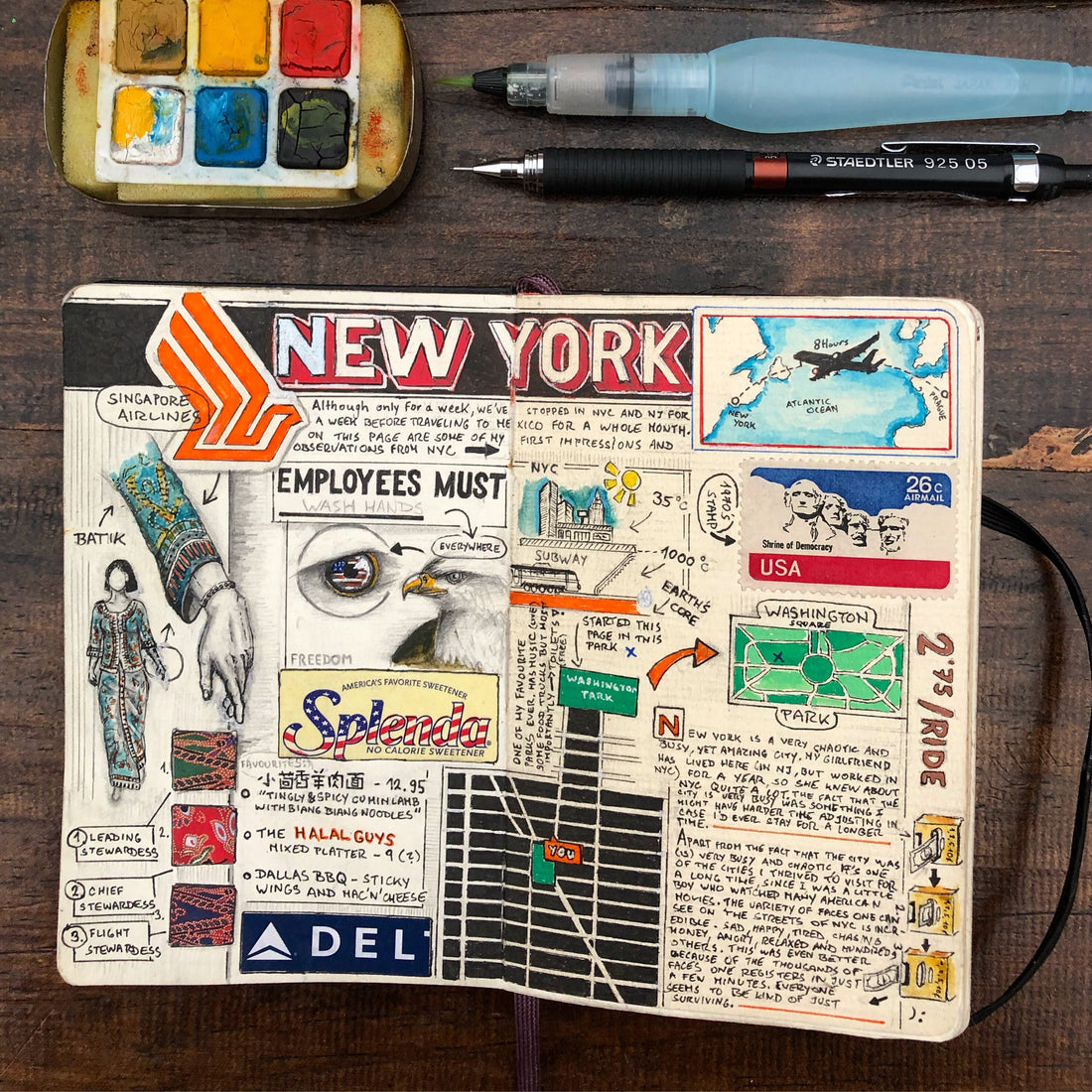Most of us document our travels in various ways like shooting videos or taking pictures and sharing them on Instagram. While those are great ways to store our visual memories, I feel that handwritten journals offer a more thoughtful form of remembering our journeys.
They encourage us to more fully engage with the places we travel to, better appreciate the details, and record what we were thinking or how we were feeling at that very moment which is something that clicking the shutter button on our cameras simply does not do.
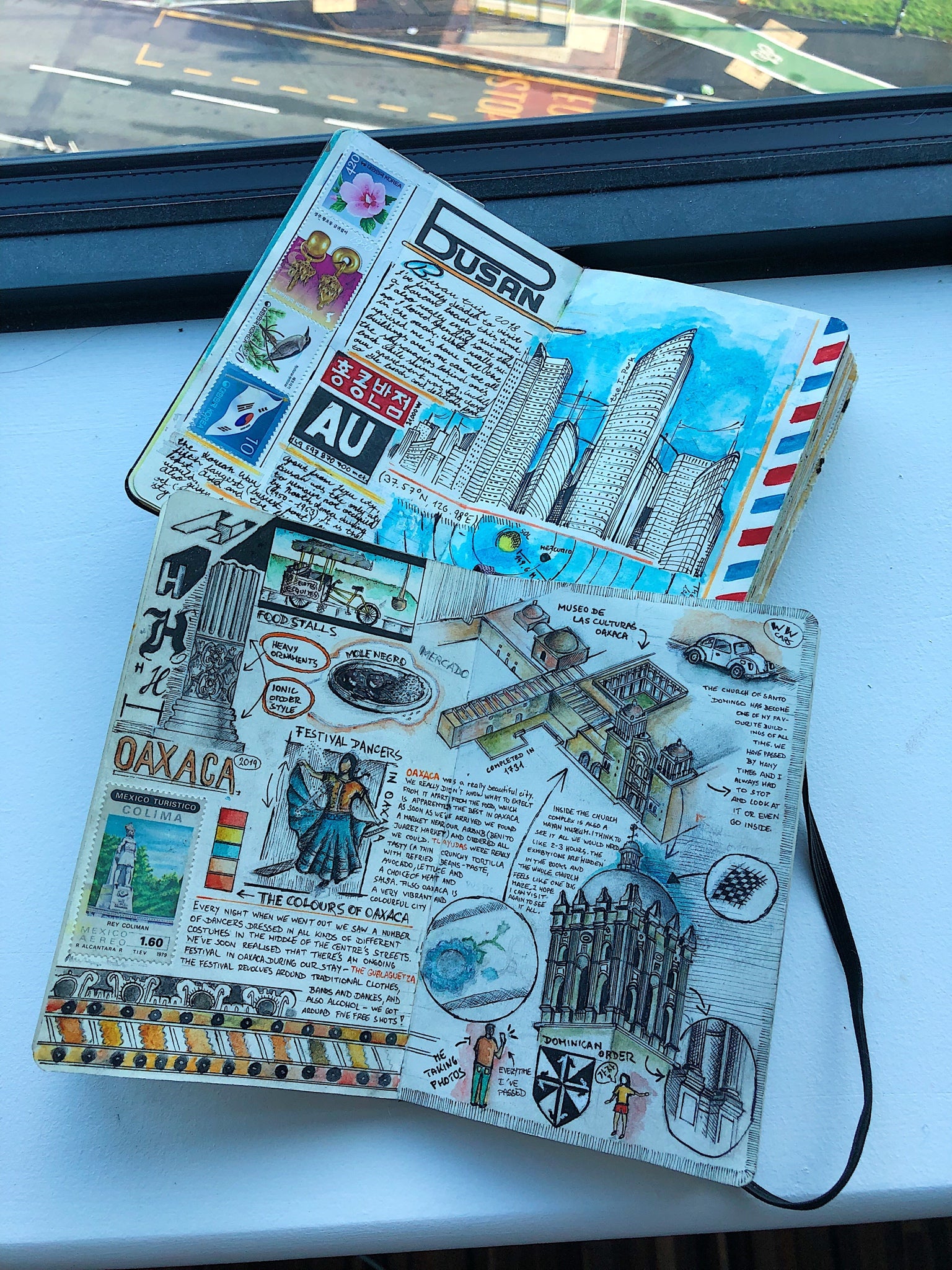
Since I was very little, I’ve been fascinated by Indiana Jones’ Grail Diary in which he noted all kinds of interesting observations. When I first began my own journal, it was purely written, but since I’m not a very skilled wordsmith and because words can not always replicate scenes, I started drawing to go along with the text.
In the age of digital devices, nothing beats the feeling of reading my old journals and remembering all the little details about my journeys. Thanks to journaling, I try to notice small details and curiosities or even explore new places I would never have considered before. In this sense, journaling works a bit like X-ray goggles, as it has taught me to observe and think about things I might otherwise miss.
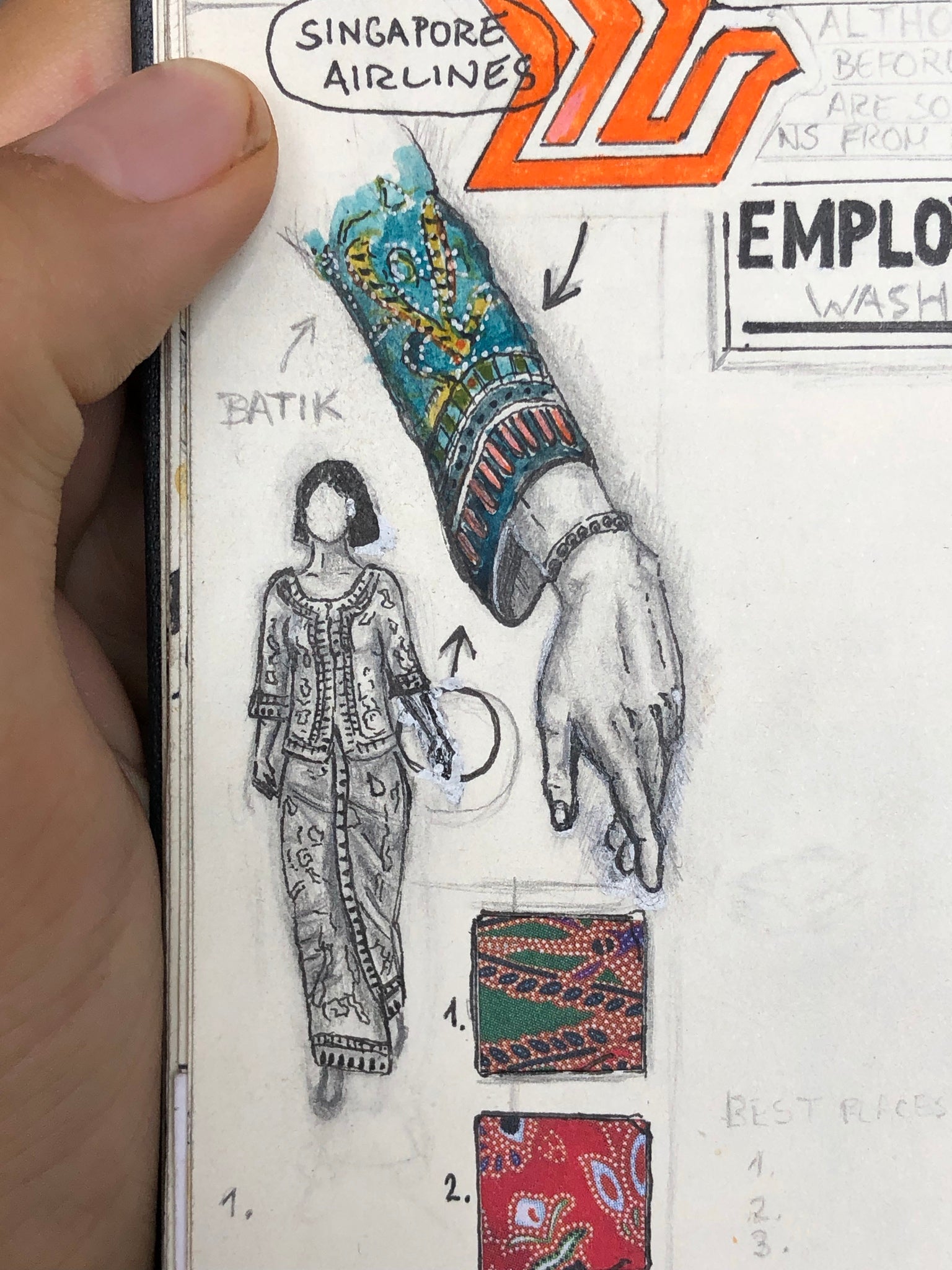
As far as the content of my journals, I note down anything that I find interesting. It might be something as simple as an airline uniform that I drew on a plane from Frankfurt to NYC. Although it was not really related to my New York experience, I fell in love with the design and decided to note it down. I believe it is not good being too strict with the content, as that could take the fun out of the whole idea behind travel journaling.
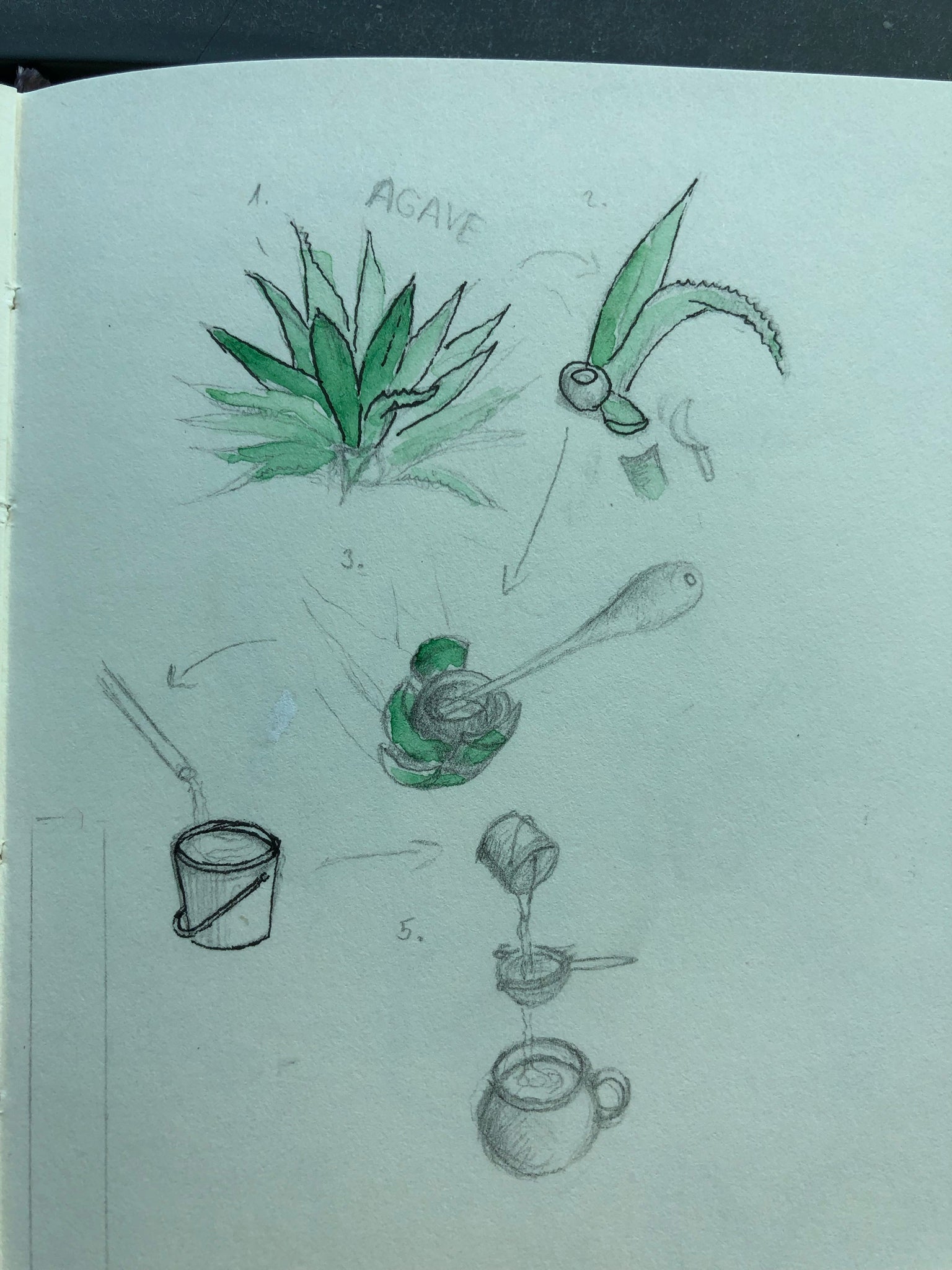
I also value preserving ancient processes and traditions in my journal, as many of them are slowly disappearing with the advent of recent technologies. One of my more recent (unfinished) attempts to do so is this process of making pulque, a traditional Mesoamerican alcohol beverage made from agave plants.
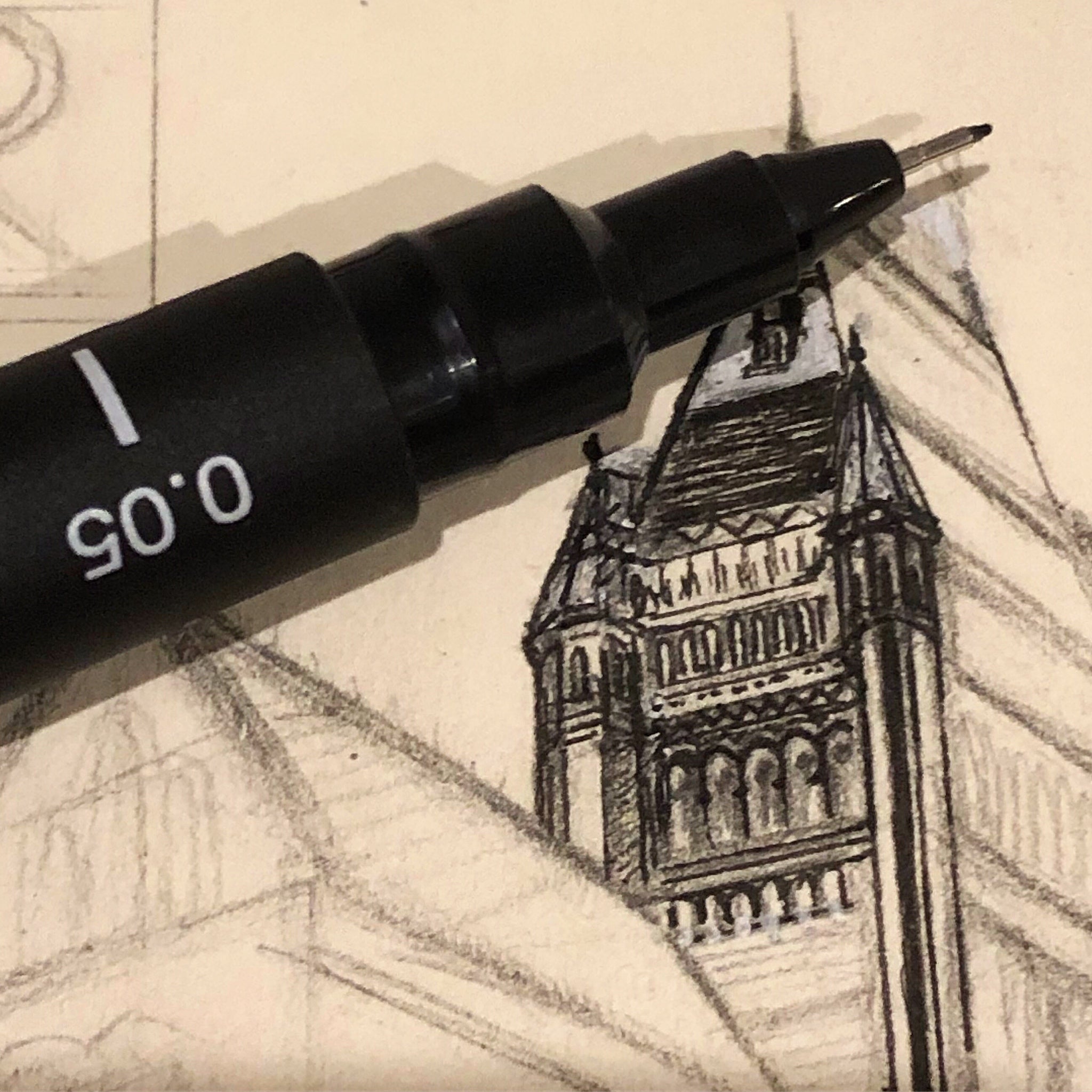
I personally don’t have a strict process as to how I journal. There are times where I might find myself sitting on a bench in front of an old church, and for the next two hours, just relaxing, observing, and making notes in my journal.
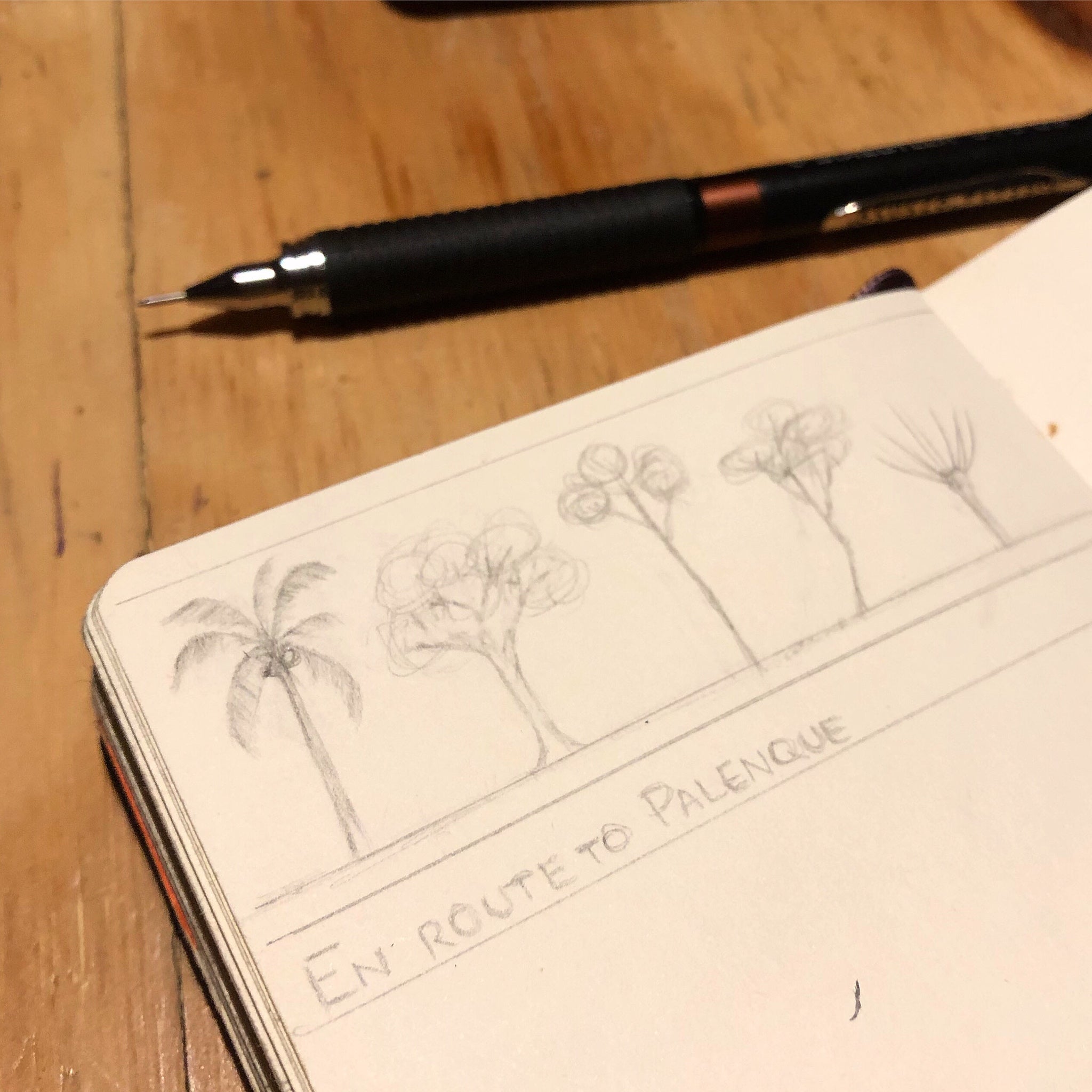
At other times, I’ll either quickly sketch in my journal or take a few photos for later reference. For instance, on one of my bus journeys in Mexico, I had time to draw on the nine-hour trip, but motion sickness prevented me from doing so. So I quickly sketched a few trees and finished them later. This stage is usually very relaxing as I begin adding some colour, ink and text to the already existing pencil lines.
Journaling is also a great way to meet people. Whenever I draw in public, people sometimes stop to observe what I’m doing and ask questions about my drawings. I even have a few pages in my journal dedicated to people I meet. I always let them write or draw whatever they want, in whatever language or style they want. This helps me to remember the people I meet along the way. Also, when I meet others who journal or draw on their travels, I like to exchange journals and draw or note something. It feels like owning a small pocket gallery!
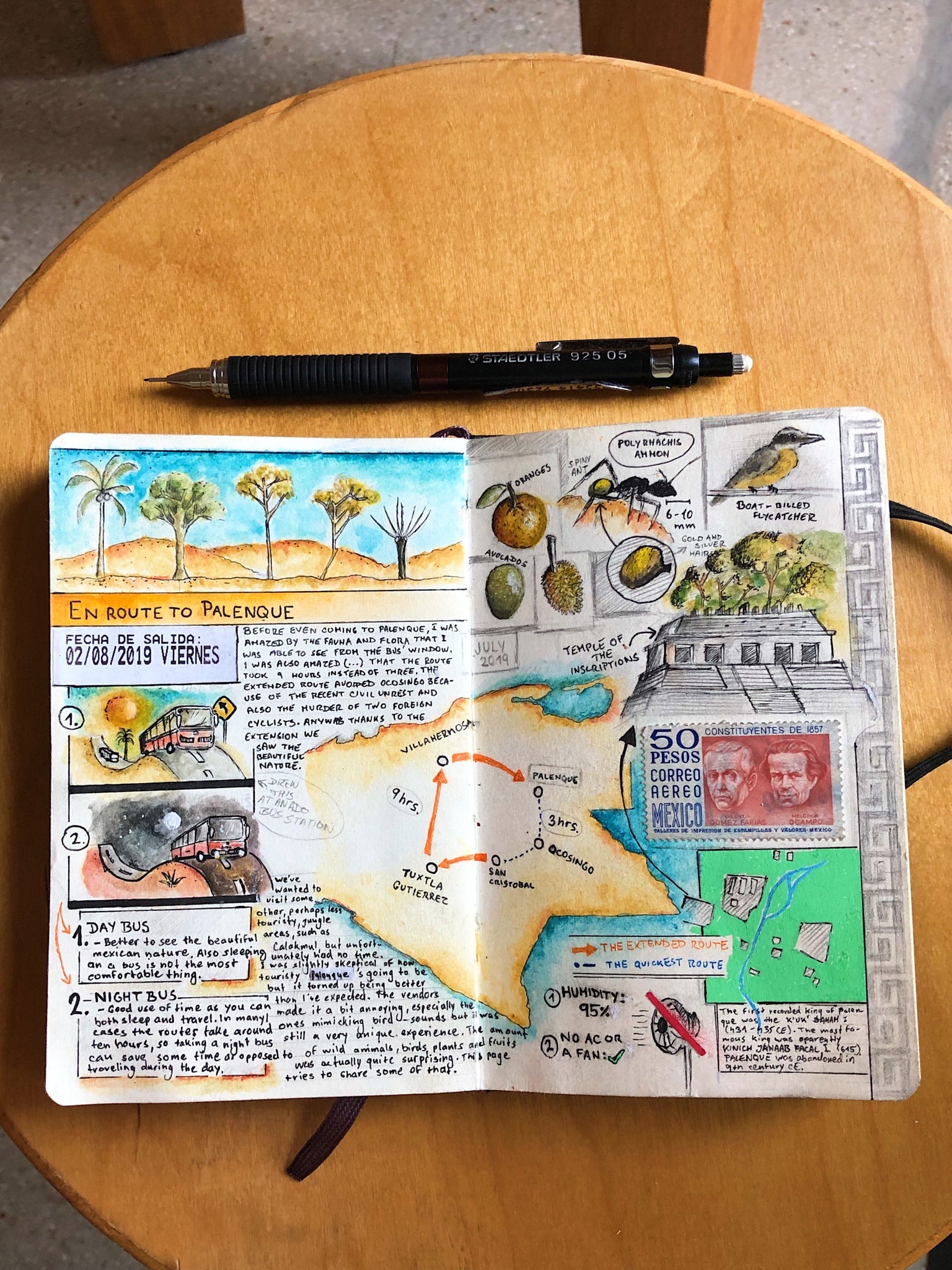
For me, travel journaling feels like I am doing something important and meaningful, in hopes that I can one day share them with my kids or nephews and nieces and give them some insight into not only what I was doing and where I have traveled, but also what the world looked like before they were born. I feel proud that I can take a piece of our life in this time and show it, in journal form, to future generations.
I remember once reading a similar article to the one I am writing here, and thinking to myself that I could never, ever draw anything like that, although I really wanted to. Other than some afterschool art classes when I was a teenager, I’ve had no other art training. But one day, I decided to buy a journal and although my first 10 or 20 pages were really messy, I was still really excited to continue.
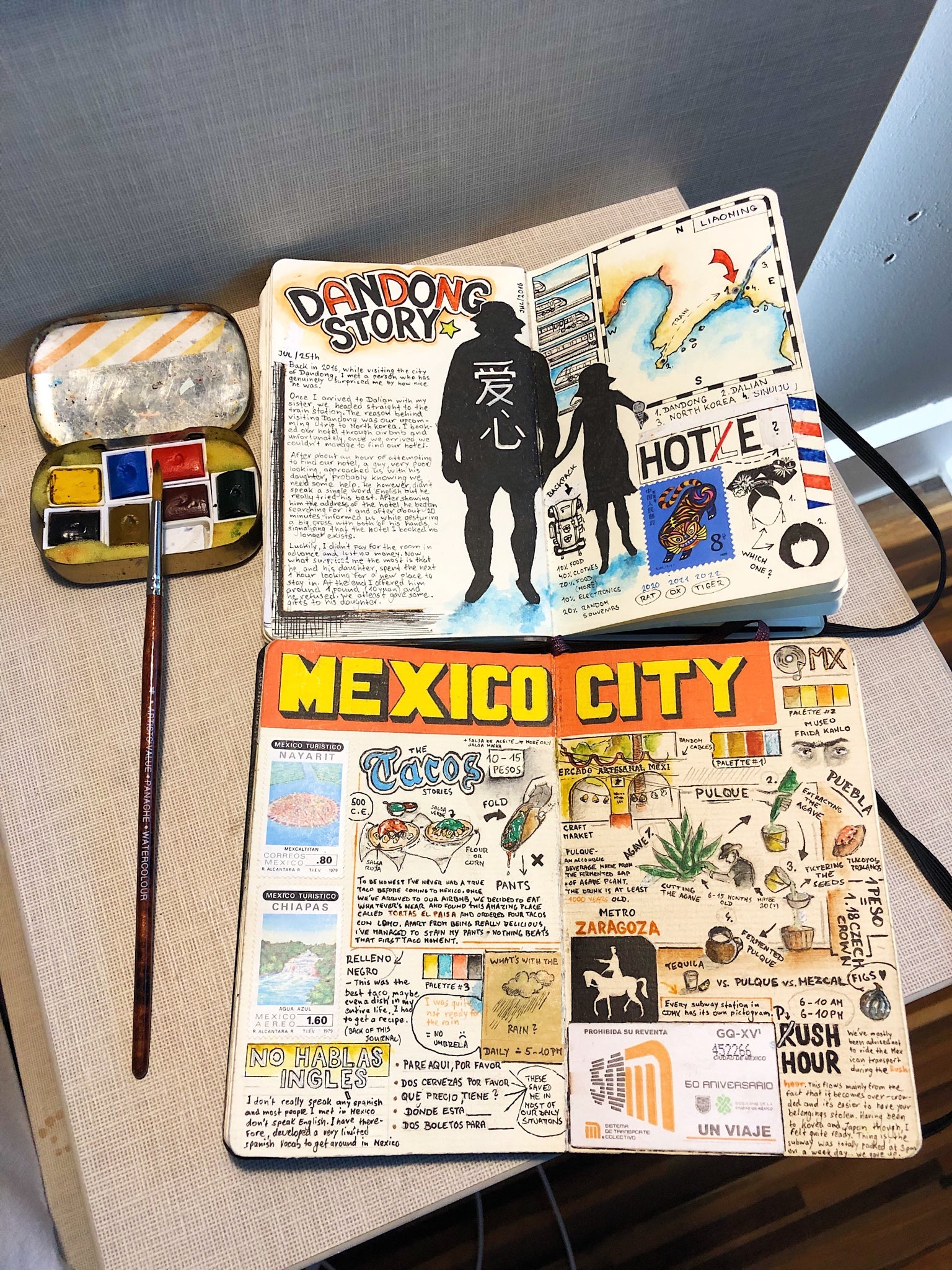
Here are some tips to get you started on travel journaling.
Be patient: As I kept drawing, I noticed that over time my drawing skills improved and I think it is really important not to give up. After a while, seeing yourself progress will give you all the necessary motivation to continue. You might want to keep a secondary scrap notebook to try out new ways of drawing and writing. This takes the pressure off and you can later transfer the techniques you like to your journal when you feel confident enough.

Get inspired: Draw inspiration from wherever you can, including tutorials or inspiring accounts on Instagram or YouTube. Check out old travel guides, as they sometimes have quite interesting illustrations. Getting inspired absolutely does not mean that you are not original and it will help you build your own style quicker.
Start small: Don't spend a lot of money on expensive brushes, watercolors, and markers until you feel like they can improve your style. There is nothing wrong with BIC pens and many artists use nothing but those. Improving technique is more important than using expensive tools!
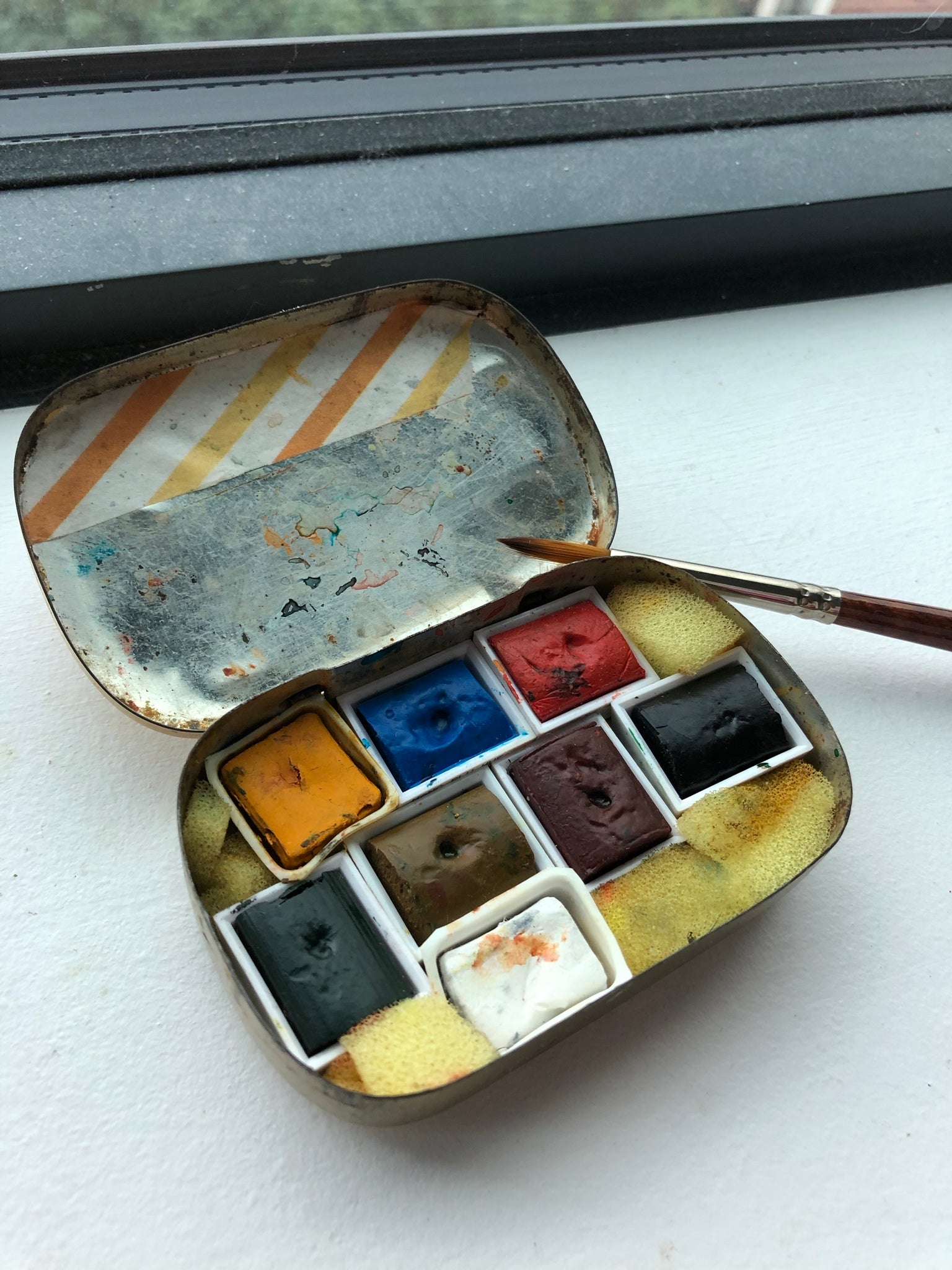
Choose a journal that meets your needs: Given that I use a lot of watercolor and markers, I opt for a journal that has paper thick enough to withstand the tools I use (around 120-160gsm). I also bought an old tin box and put some small pans of color inside. This way I can even put them in my pocket if necessary.
Have fun! As for the content and quality of the text and drawings, I believe that it is important to overlook imperfections so as not to get too stressed out over what should be a very relaxing activity. I am sometimes also not happy with how my pages look, but after looking at them a few weeks or months later, I only feel happiness that I made those pages. After all, an imperfect journal is always better than no journal at all. Have fun and see yourself improve over time, build on basic techniques, and remember why you started doing it.
About the author
 Born and raised in the Czech Republic, Adam Hacklander now lives and studies law in the United Kingdom. Because of the infamous British weather, he’s had to narrow his hobbies down to ones that can be done indoors which means less morning jogging and a bit more drawing, thinking of what he’d like to draw next, reading and cooking. Follow Adam on Instagram for more of his colorful travel journals.
Born and raised in the Czech Republic, Adam Hacklander now lives and studies law in the United Kingdom. Because of the infamous British weather, he’s had to narrow his hobbies down to ones that can be done indoors which means less morning jogging and a bit more drawing, thinking of what he’d like to draw next, reading and cooking. Follow Adam on Instagram for more of his colorful travel journals.

